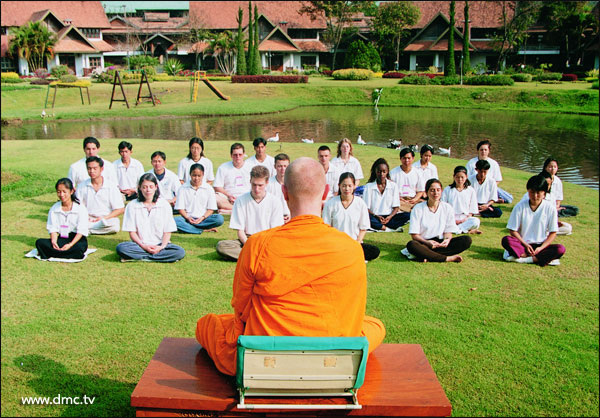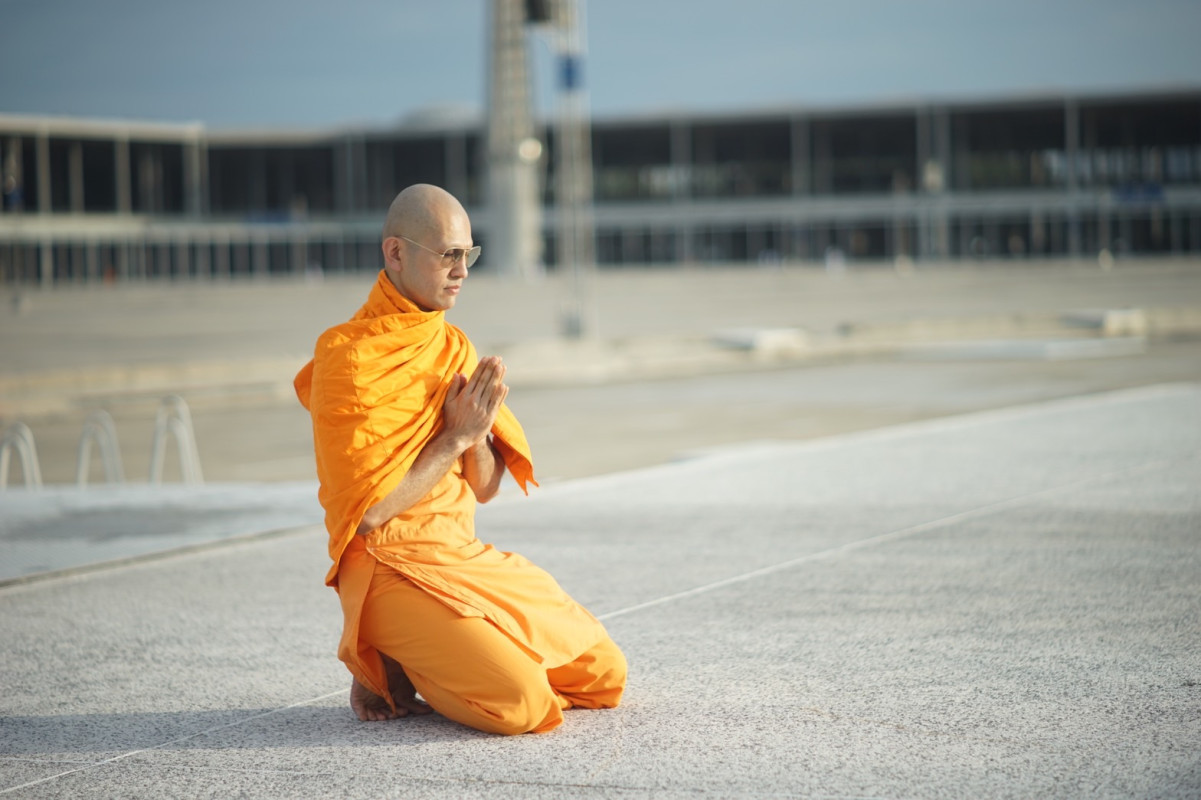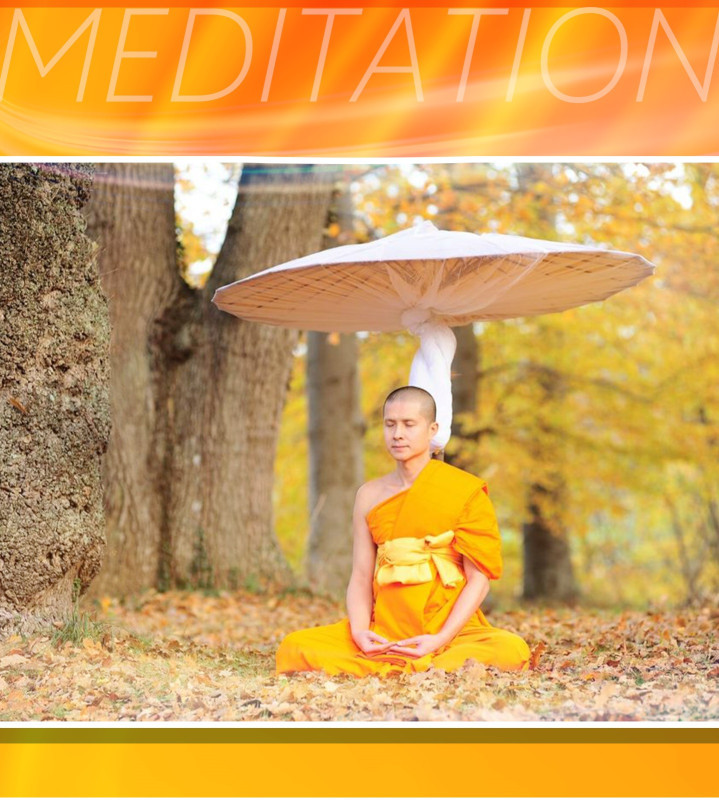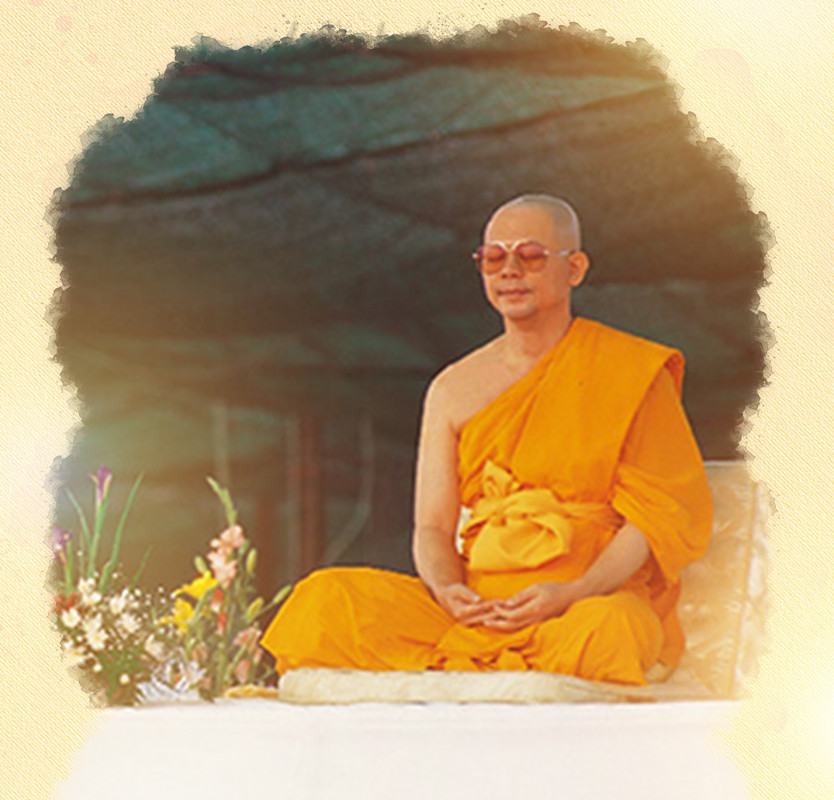Meditation – Part 3: On Closing the Eyes and Resting the Mind
Sitting Meditation

Sitting meditation requires gently holding the heart with calmness, ease, and mindfulness.
It is to be fully aware—completely present in the moment—while resting in a sense of deep relaxation.
This is not sleep, nor drifting; it is a peaceful awareness where the body is at ease, and the mind remains 100% awake and clear.
Preparing for Meditation: Closing the Eyes and Resting the Mind
We have learned that before we begin meditation, it is important to prepare a quiet and peaceful environment. Choose a sitting posture that feels natural and comfortable. Close your eyes gently, and bring your awareness softly to the center of your abdomen.
Today, we will explore more deeply the practice of gently closing the eyes and placing the mind in stillness.
The Art of Closing the Eyes
Once you are seated comfortably, with the body gently adjusted so that energy can flow freely—allowing for longer sitting without discomfort—close your eyes lightly. Let the eyelids rest as if you are about to fall asleep.
Notice that when sleep comes, we do not squeeze the eyelids or press on the eyeballs. The eyes close loosely, about 80–90%, just enough for the lashes to touch.
The reason we close the eyes softly is because closing them tightly creates tension around the temples and forehead. Sometimes, we may even unknowingly strain the eyes, which leads to discomfort. When we are eager to quiet the mind quickly, we might unconsciously press on the eyes. This inner pressure shows up at the eyelids—an opportunity to observe if we are holding on too tightly.
So, gently close your eyes. Then begin to relax your body. Let go of everything outside. Gently bring the mind to rest at the center of the abdomen, softly and peacefully.
You may become aware of your breath moving from the tip of the nose, through the throat, down the windpipe, and into the center of the belly. Wherever the in-breath seems to end—let your awareness rest there. Or simply rest the mind wherever it feels most comfortable. From here on, I will call this area “the center of the body,” as it lies in the middle of your physical being. We will study more about this center in the chapters to come.
The Gentle Placement of the Mind
Placing the mind should be done with gentleness and ease—just a soft touch, like a feather drifting down onto the surface of still water, barely causing a ripple.
Let the mind be calm and cool. Do not try to think about anything. If thoughts arise, let them pass. If you find yourself caught in thought, use a meditation word—a gentle chant repeated inwardly or aloud—to return the mind to stillness.
You may softly repeat the words:
“Samma Arahang… Samma Arahang…”
Let the sound arise from the center of the body, softly and peacefully.
If you are not familiar with “Samma Arahang,” you may use any wholesome phrase that helps settle your mind—something that brings peace, such as:
“Calm and relaxed… Calm and relaxed…”
What matters most is that the phrase does not stir agitation or unwholesome thoughts. It should lead the heart gently into stillness.
Meditation

The Seven Bases of the Mind
The Purpose of Chanting (Mantra Recitation)
The purpose of chanting or mental repetition—known as parikamma bhāvanā—is to help gather the wandering mind and bring it gently back to stillness.
The mind, by nature, tends to drift—caught by thoughts, memories, and distractions. Repeating a mantra, such as “Samma Arahang”, provides an anchor, a gentle rhythm that draws the heart inward.
On Mental Images and Maintaining a Peaceful Mind in Meditation
During meditation, if any mental image arises—whether clear or vague—there is no need to engage with it.
Simply observe it with neutrality, as a passive witness.
Let it appear and disappear at the center of the body, while your awareness remains gently placed there—calm and at ease.
If you find it difficult to ignore the image, you may choose to softly revisualize it, or transform the mental image into a support for meditation.
You may visualize a bright sun, or a clear crystal sphere, or a radiant light—like standing under the noonday sun, gazing upward.
Let it be a gentle, glowing orb, resting peacefully at the center of your body.
Hold the image lightly, with ease and stillness, for as long as it naturally stays.
If the image fades, gently bring it back again—without frustration, without effort.
You may also combine both visualization and mantra—seeing the image while softly repeating a phrase such as:
“Samma Arahang… Samma Arahang…”
Let the sound arise from within, from the center of the body.
But if at any point you feel the mind becoming more still, peaceful, and naturally quiet—
You may let go of both the image and the mantra, and simply rest your awareness gently and silently at the center of the body.
The most important thing is to remain calm, gentle, and continuous in your practice.
Do not rush.
Do not strain.
Do not force the mind to become still.
Avoiding Common Pitfalls
-
Do not tense or tighten the body.
-
Do not let the mind wander into the storylines or emotions connected to thoughts or images.
-
Do not become impatient or eager for the mind to calm quickly.
-
Do not become overly relaxed to the point of losing awareness and falling asleep.
These extremes—too much effort or too little mindfulness—pull the mind away from meditation.
If you strive too hard, the mind becomes tense.
If you relax too much without awareness, you may fall asleep.
Returning Gently
If you find yourself distracted, tense, sleepy, or caught up in thoughts, do not be discouraged.
Simply forgive yourself.
Do not be irritated or frustrated.
Gently return the mind to stillness—as if beginning anew.
Let each moment be a fresh start, with a calm and peaceful heart.

In placing the mind, do so gently and with ease—just a soft touch.
Like a feather drifting down and touching the surface of still water,
the contact is so light that the water barely ripples.
Sitting meditation requires gently holding the mind with calmness, ease, and mindfulness.
It is to be fully aware—resting in deep relaxation while remaining 100% awake and conscious.
Maintain this peaceful awareness with continuity.
Be patient. Do not rush. Stay relaxed but alert.
As you continue in this way, you will begin to experience for yourself
a sense of coolness, purity, stillness, and a profound inner joy—arising naturally from within.
Today’s Reflection on Resting the Mind
Today, we have learned about how to gently rest the mind.
If, after placing the mind, restlessness arises—and it takes the form of sound or inner chatter—you may bring the mind back by softly repeating a mantra,letting the sound arise from the center of the body.If the distraction comes in the form of mental images,you may practice visual meditation—by gently visualizinga bright sun at the center of the body,
and calmly observing that image with ease.
Above all, be careful not to rush, not to become impatient,or to unintentionally tense the body, press on the eyes,
or lose mindfulness to the point of falling asleep.
Remain calm and relaxed—with continuous, gentle awareness. And most importantly, do not forget to practice meditation every day.With regular practice, I am confidentthat you will come to experience the inner peace and happiness that naturally arises from stillness.
In the next session, we will practice sitting meditation together continuously,before we begin to explore inner experiences and the challenges that may arise during meditation. For today, I wish you peace and stillness.With kindness and calmness—goodbye for now.
 English
English
 ภาษาไทย
ภาษาไทย





